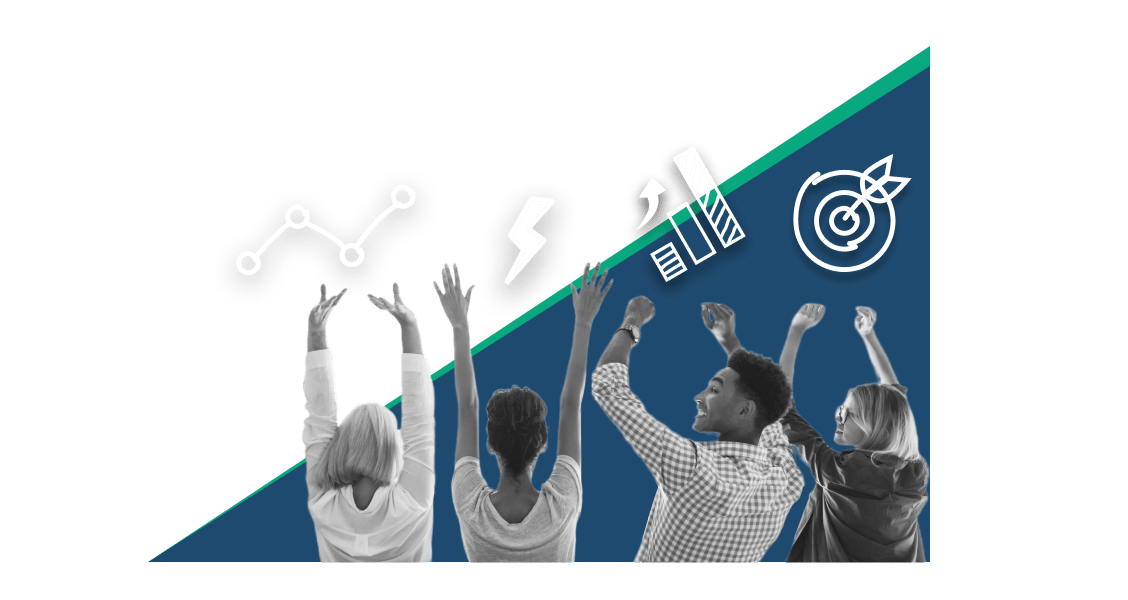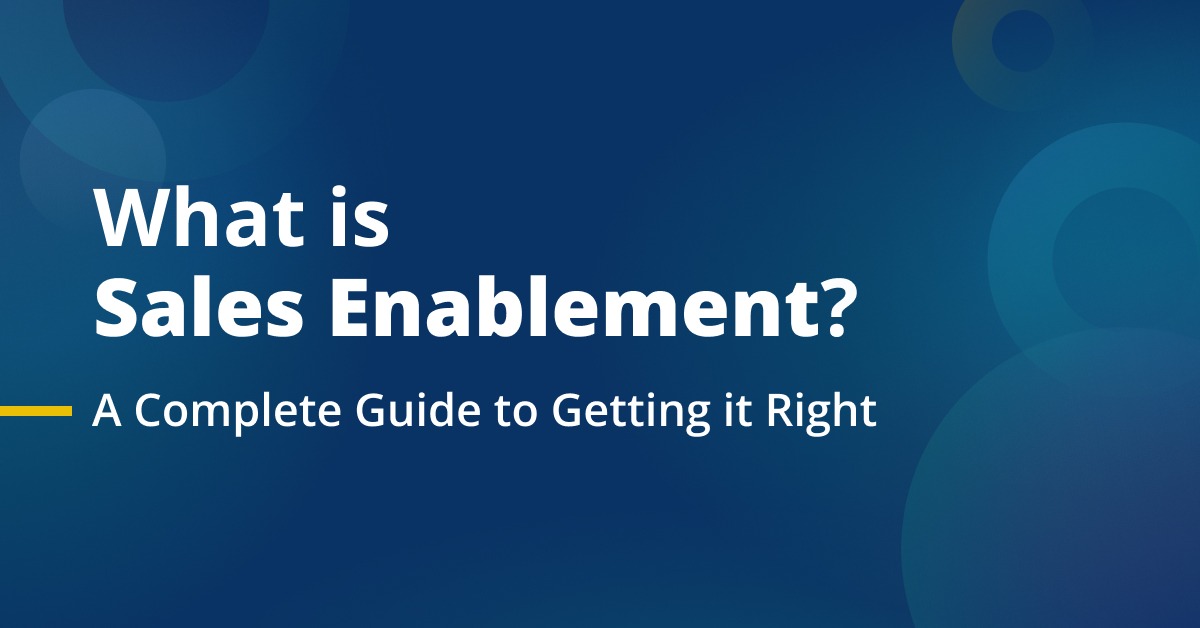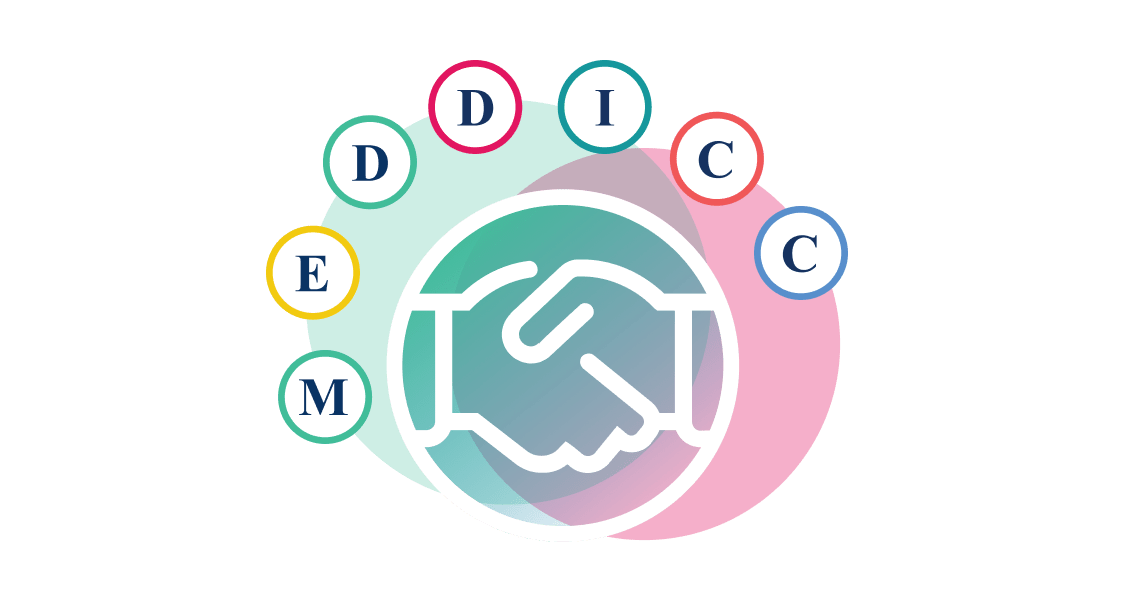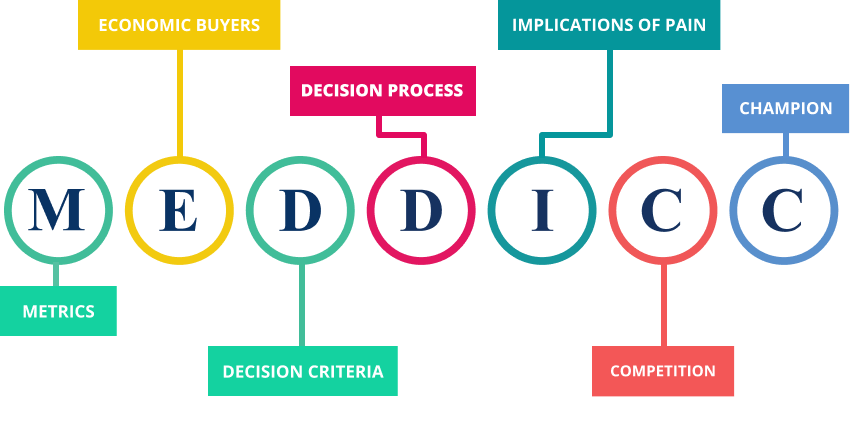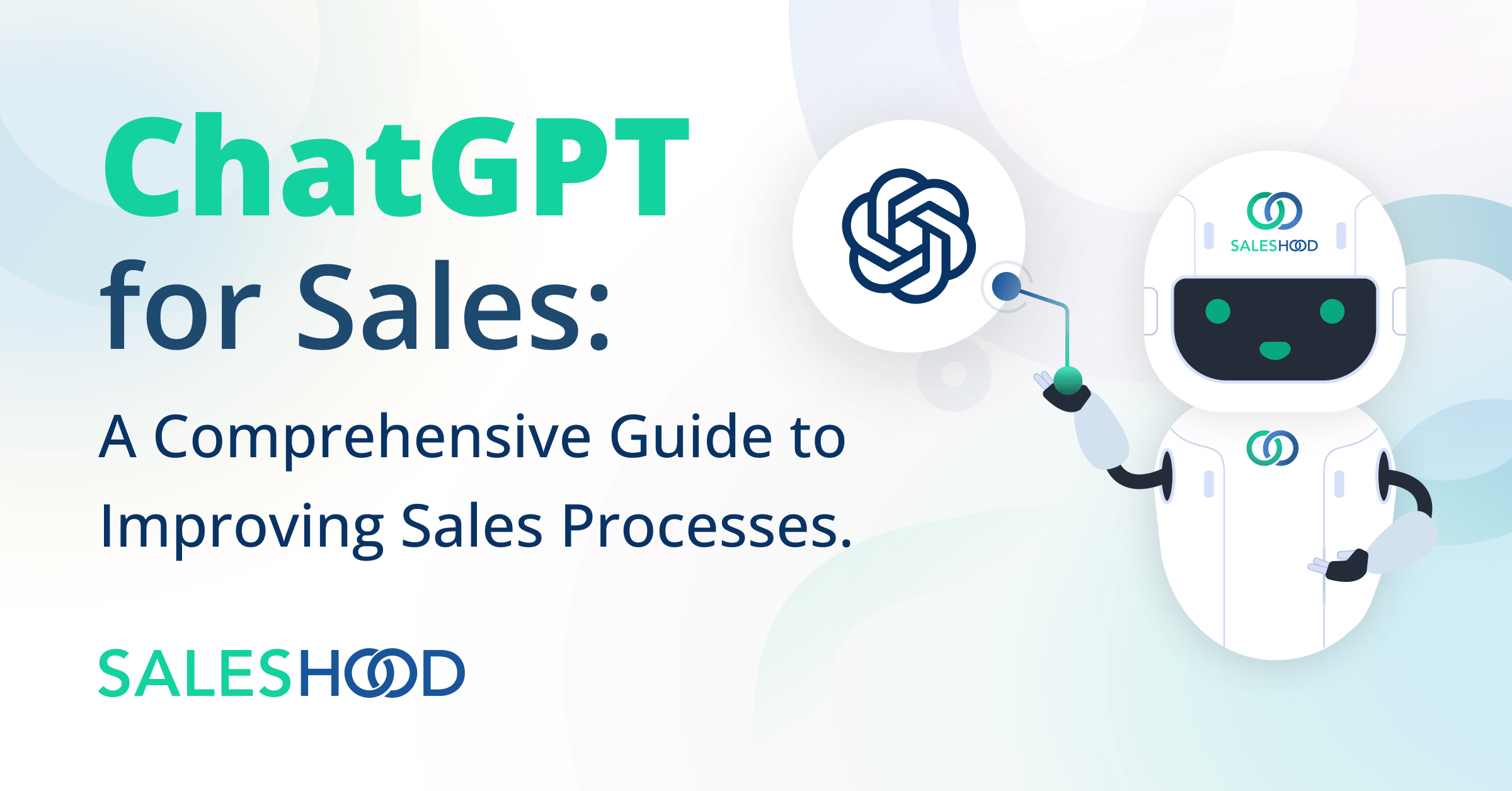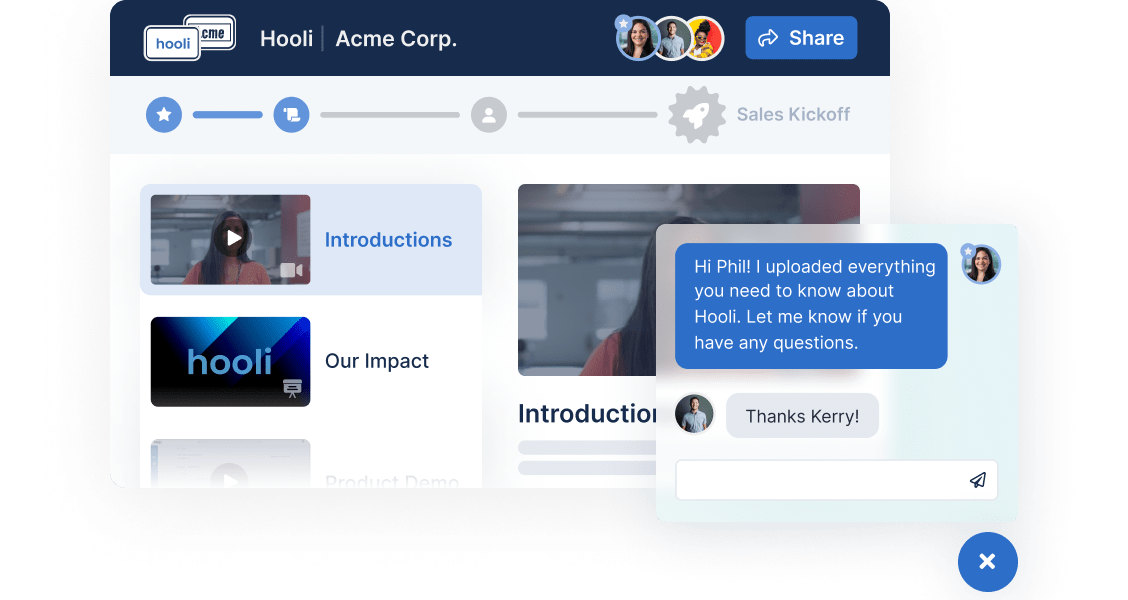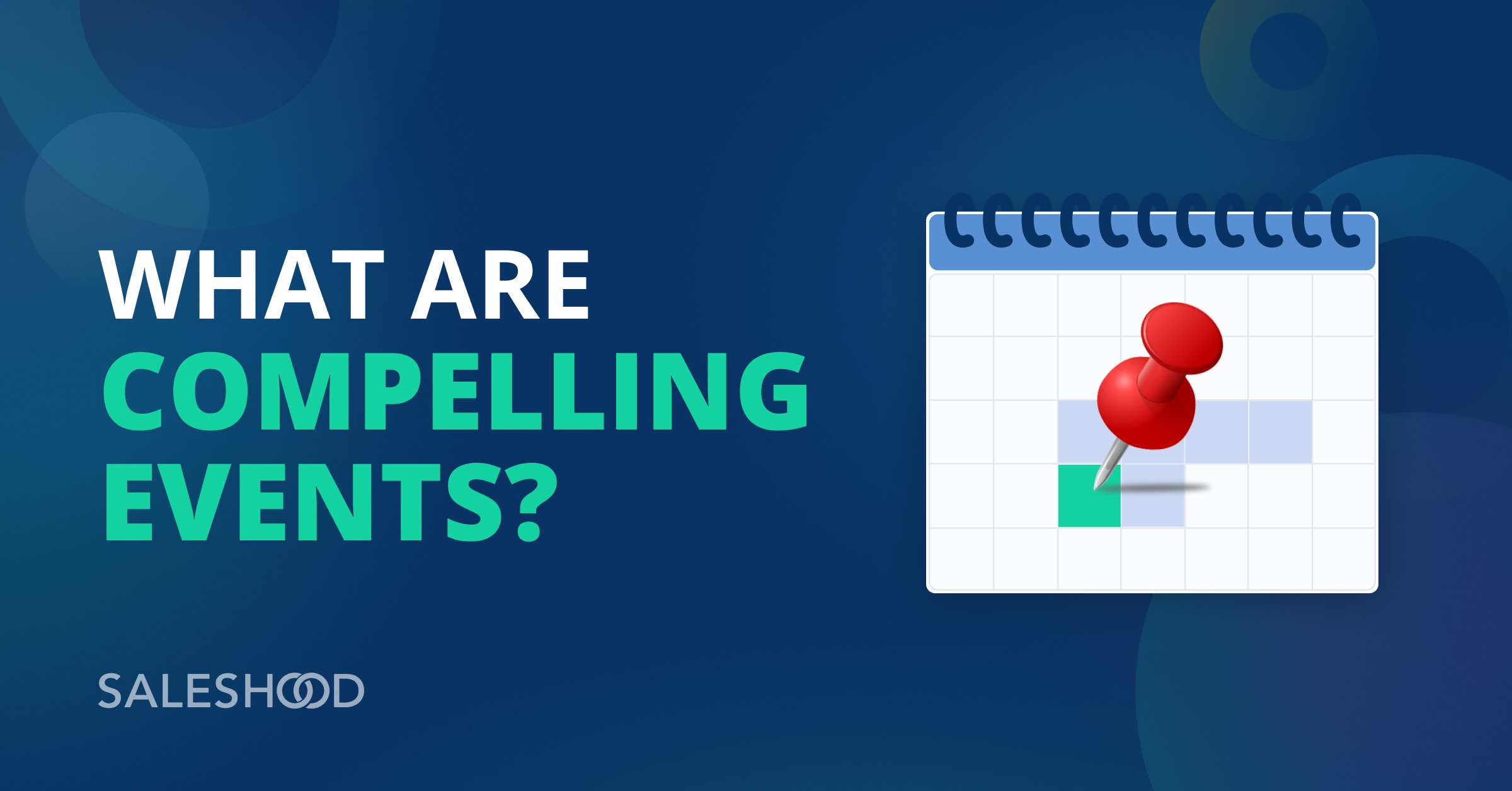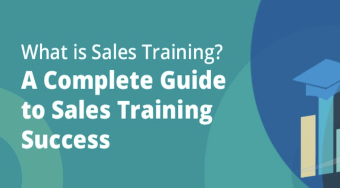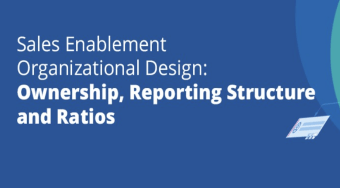Every company seems to have its own signature sales process these days – the 10, 8, 7, 5 step process – we’ve seen it all. Which one is best? Is having more steps in your sales process translate to a more custom experience for your prospect? Does it mean more win rates?
These are all very valid questions, and the answer isn’t universal. Like every effective process, the sales process has to be tailor-made to fit your business like a glove – in order to solve all the sales concerns that are unique to your business.
Picking a Sales Process That Fits
There are different types of sales processes that are particular to smaller companies with small and hungry sales teams that are used to multitasking and being closer to the resources they need, and still different types of sales processes for large corporations with sales teams that could almost be a company all in themselves.
A good and effective sales process can be compared to sailing a ship – whether it’s a large vessel or a one-man boat, the ropes need to be in place, the masts need to be in perfect shape, and the whole operation needs to be ready for immediate action the moment the wind changes.
The concept is the same – it’s the equipment that may differ.
Basic Sales Process – Essential Steps That Work
In order to figure out what kind of ship you need, you have to see what kind of crew you have and where you’re going. So before you even start prospecting, you must know the basics of what solutions you offer as a company and how your product or service will help your potential customer succeed.. This is how you’ll know what kind of prospecting you will be doing – you’ll be able to target your audience better.
A good sales process won’t just help you sell, but it will improve your company culture as well. Why? Because it will make your sales team and staff aware of your products, how they solve problems, and how they can create solutions. There is nothing more inspiring than making a difference in others’ lives, and this is the same exact process we follow at SalesHood. We have adjusted our own sales process to suit our needs, and by doing that we have resolved to be successful at putting our clients first.
Why it Works for Us
This is the sales process that we have developed, and it is a perfect example of how it’s unique, quantifiable, and works for the type of company we are, and for the specific services we provide. You can see that every step is carefully planned, from developing a sales team culture that is based on knowledge and value to the final mutually beneficial stage of negotiation.
This is how we’d like our clients to develop their sales process as well – so they are custom made, based on passion and on solid numbers, and are just as reliable in the beginning as at the very end.
SalesHood Sales Process
Qualification – our sales team is hyped and full of facts – they are aware of how our experience can contribute and cause client success, know compelling events, and measured examples of sought after solutions.
There is nothing better you can give your sales team to start off with than a portfolio of measured results. This will give them an arsenal of solid stepping stones and conversation starters that will give examples of specific value to your prospects.
Discovery – the great thing about having a measurable process, is that you can predict the ROI and the impact that your problem-solving will create. This is true for any type of business, and we find it’s especially rewarding for us. Since we are explicitly in the business of raising your ROI, discovering how your business works, and taking the time to examine all the ins and outs of budgets, business metrics, and case studies is a crucial part of our particular sales process. It helps us to understand the work before us and to give our clients something they can count on based on solid metrics.
Proof of Concept/Trial – We put it all together, using the metrics and past experience of what has worked in the past. This can be compared to a final dress fitting – we adjust all the seams so that the client clearly sees what the final product will look like. A mixture of individual tastes, preferences, and careful custom measurements.
Mutual Go-Live Plan – finalizing a contract is not enough – this is a team effort and in order for it to be successful, communication across all teams is crucial, even in a large company.
Negotiation – in the end, our success plan has to be our client’s success plan – the two are mutually beneficial and necessary for a successful deal. This should be a win-win situation in every sales organization, no matter the product or service.
Why is Qualification the Hardest?
Qualification is the starting point on the sales journey in any sales process. It’s the foundation of your foundation, and without having it in place, you can’t successfully move forward.
Then why is it that most companies find it the hardest step on the list to get right? What’s more, this is one of the most crucial aspects of a strong sales plan, and its implementation can make or break a sales team, and in turn, a company.
If this step is skipped or not executed properly, it’s a sure way of getting your sales team project the impostor syndrome to prospects – and cause the uneasy feeling that while they really want to sell, they don’t stand behind their product or understand it to the fullest. And if they don’t, why should your potential customers?
Qualification Problem Areas
Make sure to consider these common culprits:
- Poor communication
- Not enough data collection
- No useful content aimed at sales, based on case studies, success stories, and data
- No communication between teams – sales represent the hard work of everybody in your organization and should know all about the achievements and successes achieved by each and every team
- Poor documentation of sales processes and outcomes
- Hard-to-find content and an unorganized or inaccessible sales library
- No reinforcement training and sloppy onboarding – it’s important to not only set course at the beginning
Think about why Qualification would be hard for your organization – do you need help in organizing your content and enabling your sales team to use the right tools in order for your team to sell with confidence?
Consistency Through the Sales Process
The key to consistency in sales results and ROI is the absolute certainty that everyone in your sales team is following a solid, proven process. If they have been trained, inspired, and given goals and objectives with consistency, then the results will be just that – consistent and easy to measure.
Tracking and measuring can be crucial at any stage of the sales process, and it helps the sales reps to build sales on the foundation of facts and knowledge. This process works even in volatile disciplines like gambling – where the blackjack basic guide has been developed based on millions of statistics and tells you when you should take a hit and when you should stand.
Betting on Solid Data
The last thing that a Sales VP wants is for their team to gamble and make gut-based decisions – although sometimes, for a talented salesperson, gut decisions might be the final cherry on top of a well-planned strategy. What we want is something we can depend on – a solid structure that can hold any deal and provide the framework for the sales team to use as footing so they can concentrate on the creative work, and on understanding their prospects better. This is where their energy should be.
When you have everything that should and could be measured successfully mapped out, then the intuitive and human work of sales becomes the focus. Your sales team doesn’t try to juggle organizing their resources, paperwork, training – and have the client care part of the job fall through the cracks.
Sales Methodology – How Does it Affect the Sales Process?
Sales methodology is a key aspect of developing a living and breathing sales culture in your organization, It helps to align all the puzzle pieces together, and help your teams work together like a well-oiled machine. Sales, marketing, HR, and other teams will be aligned together in order to train, re-train, and educate their sales professionals when the time is appropriate.
The absolute must in having a sales methodology is being consistent and steady – following your plan and reinforcing it will make your sales environment into a stable structure for your sales team. The sales process will become practiced, smooth, and automatic.
Perfect Practice Makes Great Sellers
Much like an acrobatics performer who has been trained with a sense of purpose, and has repeated their moves countless times under a trusted, watchful eye of a coach. They make it look easy, and let their personality shine through in their act, without making the whole performance look labored and downright dangerous.
Although not as visually impressive, a sales professional is similar in a lot of ways. They might have a lot of raw talent and personality, but without the proper training and honing in their skills, the performance won’t end well.
Sales methodology brings in the element of order and discipline that your talented individuals need the most. It also brings the necessary element of consistency and performance tracking. It’s this consistency that’s the most important, no matter what kind of sales methodology you pick – you will have a better chance of succeeding as long as you follow it.
Let’s go over the SalesHood methodology again – this methodology is proven to work for companies like ours. It’s a typical set of stages for any tech company that provides solutions in B2B software.
- Step 1: Qualification
- Step 2: Discovery
- Step 3: Demo/Trial
- Step 4: Mutual Plan
- Step 5: Proposal
These steps are usually custom made to fit your organization – the sales process is affected by a number of well-defined steps. Often, companies will add more steps or subtract them, according to what they find most helpful to their sales team.
Mapping the Buyer’s Journey Throughout the Sales Process
In a successful sales methodology, salespeople turn into priceless record keepers that will help to make your method better tailored to suit your clients’ and prospects’ needs and expectations – significantly improving your end results in the process.
Of course, this won’t be a simple list of statistics with pie charts and bar graphs (although sometimes it might be). Because you are dealing with human prospects, the answers will be personal and detailed, leaving a lot of room for interpretation and creativity.
You can map a buyer’s journey by asking questions along every step in the process, no matter what process you end up choosing. You will collect these questions, answers, and use them to your advantage when the time comes to coach your team and to train new team members.
Content and Winning Resources
When you ask your questions, remember about the types of sales content and sales assets that are most useful for your sales reps to use. How can you turn these answers and lessons into valuable training content that can be reused and added to your sales content arsenal? Articles, social media, videos, podcasts – and other easy to access just-in-time content pieces are an important part of the process and a powerful sales enablement tool.
Here are some examples of the buyer’s journey mapping questions that salespeople should answer throughout the sales process:
How was value quantified and documented? It’s important to keep track of the numbers and have them clearly defined. You are providing value to your clients, and your biggest selling point is showing potential customers how this value contributes to their success. It’s time to make Excel or Google Sheets your best friends, and start keeping track of the details. This type of data can be turned into infographics, beautiful, and enticing visual graphs and talking points for your sales team to use later.
How did we build relationships with our champion, executive sponsor, and influencers? This is important because when you build key relationships like this, you never want to start without a playbook. A successful sales methodology will provide this playbook for you, based on what’s worked in the past – it will give you templates, ideas, and resources to go from, so you don’t have to reinvent the wheel, but build from the experience of others in your company.
How were mutual plan expectations communicated and executed? This is the anxiety killer. While many salespeople are great at driving home the deal, a surprising amount of them gets choked up in the end when it’s time to execute the last strokes – this is the most sensitive home stretch where you don’t only make the sale, but put the last brick in the foundation of the client journey, thus sealing your relationship. You don’t want to close the door after you close the sale. Answering this question will build a database of scenarios, communication aids, and positive prompts for your team to guide the client through mutual plan expectations without anything left unsaid. Repeat business depends on this.
These are some of the most common questions – of course because your sales process will depend on your company, your questions will have to be tailored to build a knowledge base unique to you. While this has been proven to work extraordinarily well with B2B SaaS organizations, you will find that any type of business needs a uniform way to measure their process. You cannot improve, fix problem areas, and build a foundation without measuring the value you provide.
Using these resources to coach your team will make them more intuitive about the buyer’s journey – making them more responsive to a prospect’s needs and putting problem-solving first.
What unexplored grey areas are there in your organization, and which stage of the sales process do you think is most related to this area?
Activating a Winning Sales Process
In order to take out consistency, we need to put in consistency. No matter what sales process you choose, you have to make sure that you consistently follow it, train every sales rep to follow it, and make it their own. This can be a specific sales process or a combination of them. You have many of them to choose from:
- Selling Through Curiosity
- MEDDIC
- The Challenger Sale
- SPIN Selling
- SNAP Selling
- Miller Heiman
- Value Selling
What many of these sales process guides have in common, is that they go beyond throwing facts at the potential customer. Instead, they also focus on proving that their service really works – they make the sales rep go deep into what’s important to the client – how can they make or save money with the product or service that you provide.
Another important aspect of a good sales process are replicable results. They are what makes this whole process tick. Without proven repeatable and measurable results, it’s all just talk, isn’t it?
Once you’re done creating a sales process, you need to activate it – it all starts with the right training and onboarding. In fact, achieving a greater sales velocity early on in this process is one of the signs that the method is working.
A well-trained sales enablement team will turbo-charge training by organizing all of your resources into a searchable and accessible library – something that can be figured out by any sales rep when they’re looking for just-in-time data about your product or service.
A key step in increasing sales velocity is data and resource organization because your ability to train and educate your sales reps rests on the quality and relevance of the training materials that you can provide. And your training materials have to be your own – with your own success stories and data.
Setting Expectations
In conclusion, the most important stage of introducing a new and complete sales process to your next sales cycle is to set expectations with your team. This is called pre-work, or the work of laying the foundation before building on them. Mowing the field before the big game.
The next step is putting in the hard work and training. A variety of tools can be used for this, and some of the ones we found work best are interactive workshops, where your team can role-play, experiment with personas, fictitious companies, and to think creatively about the whole process. It’s also good to employ adoption best practices to get your teams using your process and technology.
This is where a lot of their problems are going to get solved and questions answered. They will have a virtual ride through the whole sales pipeline and through the sales funnel, practicing all the useful skills that you want them to perform effortlessly.
A lot of companies view training as a necessary evil – time that would be better spent on trying to make actual sales. But considering how much this process increases the success rates, turbocharges your sales velocity (people who feel comfortable and knowledgeable about something perform faster, with more confidence), this part of the process is well worth the effort, and is necessary to your success, speed, and win rates.
Closing the Deal
Whatever sales process you end up going with, remember that it helps you close deals much faster because it is a process. It’s a roadmap that tells you how to go from point A to point B, but you will also need sturdy shoes, a compass to keep you on track and exercise to make sure you are physically fit enough to follow the path.
Training, data, mentorship, keeping track of the buyer’s journey, expecting to and knowing how to handle objections before closing, and knowing your product or service inside out, are the essential steps along the journey – wherever your sales process road map will take you.
